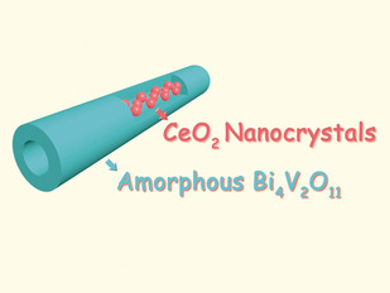The electrocatalytic nitrogen reduction reaction (NRR) is emerging as a promising approach to achieve N2 fixation under ambient conditions. The electrocatalytic NRR generally relies on noble-metal-based catalysts, however, the NH3 yield and Faradaic efficiency are still low.
Gang Chen, Harbin Institute of Technology, China, Guihua Yu, The University of Texas at Austin, USA, and colleagues have developed an amorphous noble-metal-free Bi4V2O11/CeO2 hybrid catalyst that allows high-efficiency N2 fixation under ambient conditions. The hybrid catalyst is prepared by a single-spinneret electrospinning process with a subsequent calcination.
The hybrid material design can prevent the crystallization of Bi4V2O11 and help to maintain an amorphous structure. This structure results in abundant defects, which serve as active sites for N2 adsorption and activation. The established band alignment in the as-obtained catalyst can also facilitate the interfacial charge transfer for needed for the NRR process.
As a result, the NRR performance is enhanced and reaches 23.21 µg h–1 mg–1cat. in NH3 yield and 10.16 % in Faradaic efficiency. This design strategy opens up new opportunities to rationally design high-performance NRR catalysts.
- An Amorphous Noble-Metal-Free Electrocatalyst Enables N2 Fixation under Ambient Conditions,
Chade Lv, Chunshuang Yan, Gang Chen, Yu Ding, Jingxue Sun, Yansong Zhou, Guihua Yu,
Angew. Chem. Int. Ed. 2018.
https://doi.org/10.1002/anie.201801538



